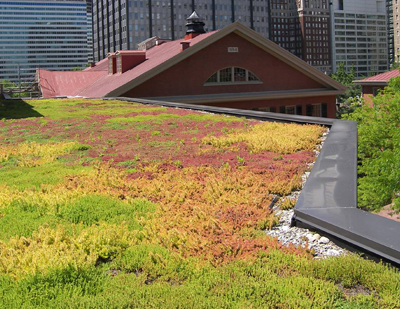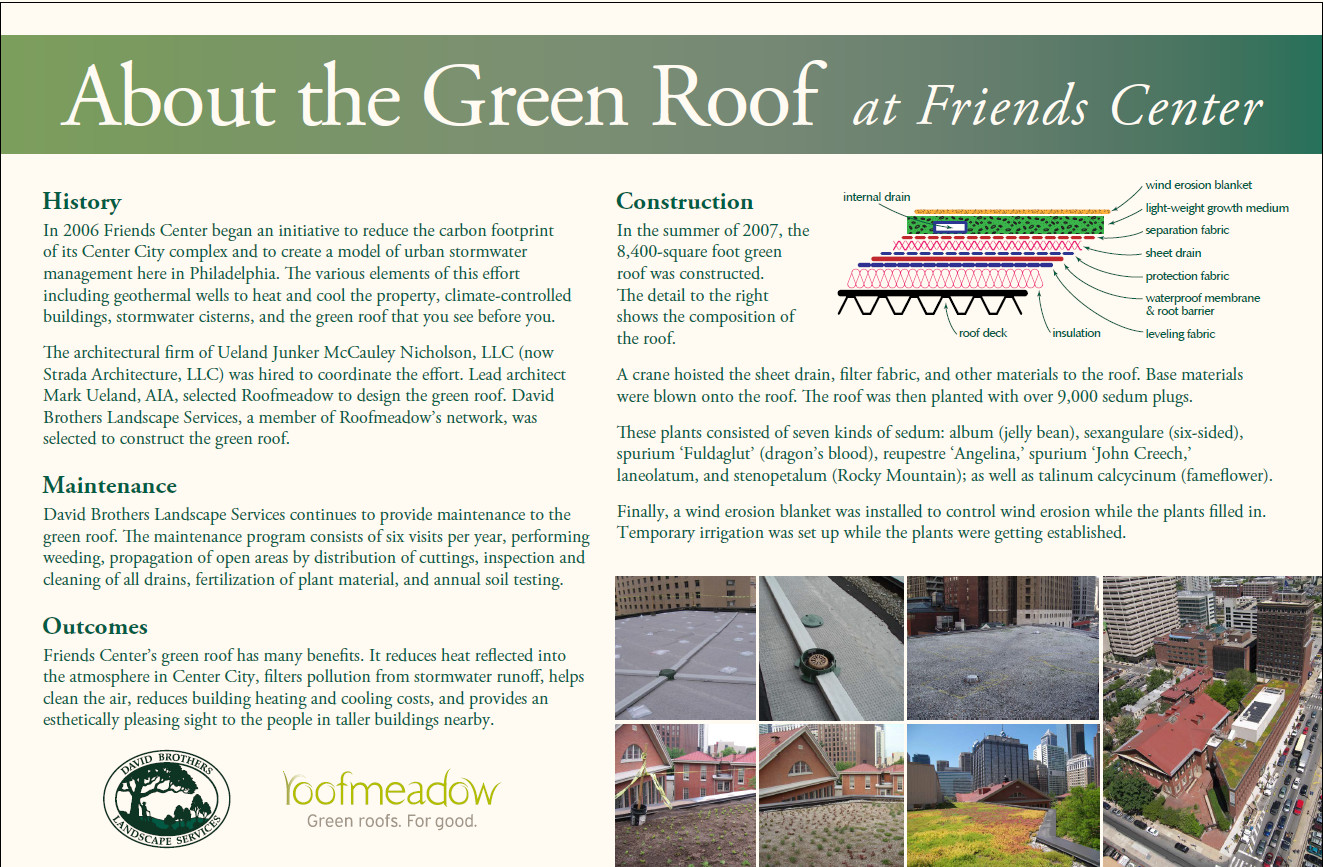Vegetated roofs, otherwise known as “green roofs” are literally rooftop gardens.
The green roof at Friends Center
 • cools the building and the surrounding area in the summer and acts as added insulation in winter. On a 90o day, an ordinary black tar roof may be as hot as 150o. A green roof will be 80-85o. In cities where there is a concentration of green roofs they have succeeded in lowering the “urban heat island effect” where the city is hotter than the surrounding countryside because of the many heat absorbing roads and roofs.
• cools the building and the surrounding area in the summer and acts as added insulation in winter. On a 90o day, an ordinary black tar roof may be as hot as 150o. A green roof will be 80-85o. In cities where there is a concentration of green roofs they have succeeded in lowering the “urban heat island effect” where the city is hotter than the surrounding countryside because of the many heat absorbing roads and roofs.
• protects our watershed by holding back stormwater which might otherwise wash pollutants into the rivers. Friends Center is a demonstration site for Philadelphia to reduce sewer overflows that carry sewage into the Delaware and Schuylkill rivers as many as 50 times a year.
• extends the life of the underlying roof by shielding it from extremes in temperature and other kinds of damage—green roofs have been known to extend a roof’s life up to three times its normal expectancy, which saves building costs.
The plants are specially selected species of sedum that can withstand hot, cold, and dry conditions. They require little to no maintenance, and are be a beautiful addition to the view from nearby Center City high rises.
Species planted on Friends Center’s vegetated roof are
Sedum album
Sedum repustre “Angelina”
Sedum sexangulare
Sedum spurium “Dragon’s Blood”
Sedum Spurium “Fuldaglut”
Sedum Spurium “John Creech”
Talinum calycinum
For more information on vegetated roofs please visit:
Penn State Center for Green Roof Research
